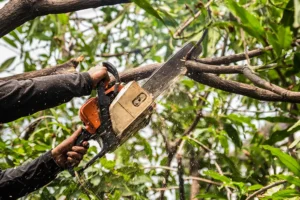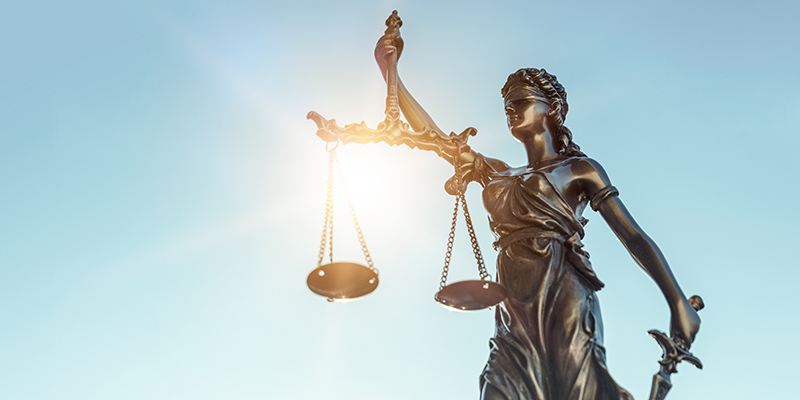Getting To Know Your HOA Tree Removal Policy

Trees are an important part of a community’s landscape, offering shade, curb appeal, and environmental benefits. But when a tree becomes hazardous, diseased, or too large for its location, questions about responsibility can arise quickly. That’s when understanding your HOA tree removal policy becomes essential.
Browse By Category
Sign up for Our Newsletter
Trees are an important part of a community’s landscape, offering shade, curb appeal, and environmental benefits. But when a tree becomes hazardous, diseased, or too large for its location, questions about responsibility can arise quickly. That’s when understanding your HOA tree removal policy becomes essential.
Why Tree Policies Exist in HOAs
Homeowners associations create guidelines to preserve the visual consistency and safety of the neighborhood. A well-defined HOA tree removal policy ensures that residents, board members, and vendors all know who’s responsible for what when it comes to the trees lining streets, parks, and individual lots. These policies help prevent disputes, reduce liability, and protect shared green spaces.
Trees can cause damage to sidewalks, sewer lines, or building foundations if not properly managed. Falling limbs or unstable trees also present safety concerns during storms. An HOA that includes clear language on tree care, pruning, and removal sets expectations for both common and private areas, avoiding confusion when action needs to be taken.
What Typically Falls Under the HOA Tree Removal Policy
Each HOA is governed by its governing documents, including bylaws, CC&Rs (Covenants, Conditions, and Restrictions), and landscape maintenance agreements. These documents spell out where HOA responsibilities end and homeowner responsibilities begin.
Most HOA tree removal policies differentiate between trees on common property and those on private lots. Trees in common areas—such as greenbelts, clubhouses, sidewalks, and medians—are usually the HOA’s responsibility. Suppose a tree located in one of these spaces is dead, diseased, or poses a threat to safety or property. In that case, the HOA is typically responsible for arranging and paying for its removal.
Trees located entirely within a homeowner’s lot may be the homeowner’s responsibility, depending on the policy. However, there are exceptions, especially if the developer originally planted the tree as part of the community design or if the tree poses a risk to shared structures or neighboring properties.
In mixed-responsibility situations, some HOAs take a collaborative approach. For example, the HOA may remove a hazardous tree but require the homeowner to pay a portion of the cost. Others may ask homeowners to replace the tree themselves, but only with pre-approved species to maintain a consistent aesthetic.
Why Have an HOA Tree Trimming Policy?
While removal is the most extreme form of tree management, most communities deal with regular upkeep. The HOA tree trimming policy outlines when and how trees should be pruned, who performs the work, and which trees fall under which party’s care.
Routine pruning promotes tree health and appearance, but it’s also necessary for visibility and safety. Overgrown branches can obscure traffic signs, damage property, or block pathways. Many HOAs maintain a schedule for trimming trees in shared spaces, contracting with certified arborists or landscaping services to complete the work.
Trees on a homeowner’s property are often a gray area. Homeowners might be responsible for pruning their trees, but only within certain limits. If the tree encroaches into a neighbouring yard or common area, the HOA may step in or expect the homeowner to address it promptly. Always check the HOA tree policy before hiring anyone to trim a tree, especially if it borders a shared space or sidewalk.
Is the HOA Responsible for Tree Trimming?

One of the most common questions homeowners have is: “Is the HOA responsible for tree trimming?” The answer depends entirely on location and ownership.
If the tree is located on HOA-managed land, such as near community pools or walking trails, then yes, the HOA is likely responsible for its upkeep. In these cases, the association usually arranges for routine maintenance and emergency trimming as needed.
However, if the tree is on a homeowner’s private lot, then the responsibility may shift. Some HOAs require the homeowner to keep trees trimmed to avoid interference with neighboring properties or utilities. In rare cases, especially in townhome or condo communities, the HOA may still handle tree trimming even on semi-private property, but that’s usually spelled out in the CC&Rs.
It’s important not to assume one way or the other. Review the HOA tree trimming policy or contact your property manager if you’re uncertain. This avoids misunderstandings, fines, or even liability for damage caused by neglected trees.
When Can a Tree Be Removed?
The HOA tree removal policy typically outlines several justifiable reasons for removing a tree. These often include:
- The tree is dead, dying, or diseased beyond recovery.
- The tree poses a safety hazard (e.g., leaning, cracked trunk, or brittle limbs).
- Roots are damaging sidewalks, driveways, or infrastructure.
- The tree is interfering with visibility or access to community features.
- The tree was planted without proper approval.
In many communities, a homeowner cannot simply remove a tree from their yard without permission, especially if the HOA enforces a strict HOA tree policy around aesthetics and ecosystem preservation. In such cases, a written request or architectural application may be required before removal can proceed.
For common areas, the board or landscape committee usually makes the call. They may consult an arborist to determine if the tree can be saved or if removal is the only option. Even when a tree appears unhealthy, removal is often the last resort.
Getting Approval to Remove or Replace a Tree
If you’re a homeowner considering removing a tree on your property, check the HOA tree removal policy before taking any steps. Many HOAs require approval through a formal request process. You may need to provide photos, a statement from a licensed arborist, or details about how you plan to replace the tree.
Replacement requirements can be surprisingly specific. Some associations require new trees to be a certain height or species and planted in a similar location. These rules aim to maintain the look and ecological balance of the community.
Failure to follow the proper process could result in fines or being asked to replant a tree at your expense. Even if the tree seems to be on your land, it may have been planted as part of a community-wide design and fall under HOA oversight.
What If a Tree Falls and Causes Damage?

This is where the HOA tree removal policy and insurance policies intersect. If a tree located on HOA property falls and damages a home, fence, or vehicle, the HOA’s insurance may cover the cost of repairs. However, if the tree showed visible signs of distress and the HOA failed to act, they could be held liable for negligence.
Conversely, if a tree on a homeowner’s lot causes damage to HOA property or a neighbor’s home, the homeowner may be responsible, especially if they neglected proper maintenance. That’s why staying informed about the HOA’s expectations around tree care is more than just rule-following—it’s a protection against liability.
How an HOA Tree Removal Policy Evolves Over Time
As communities mature and landscapes evolve, so do the policies that manage them. An HOA may revise its tree trimming policy to address invasive root systems, drought tolerance, or new safety standards. Homeowners are encouraged to attend meetings, voice concerns, and stay informed about changes.
In some regions, state or local laws also influence tree removal practices. California, for example, has heritage tree ordinances that restrict the removal of particular species, even on private property. In those cases, HOA policies must work in tandem with municipal codes.
Keeping Trees and Communities in Harmony
Maintaining trees in a shared-living community is a balance between beauty, safety, and responsibility. A clear and well-communicated HOA tree removal policy helps reduce tension and ensures every party knows what’s expected.
Do you need assistance in managing your HOA community? Check out our detailed online directory for your area’s best HOA management companies today!
Related Articles:
- Unenforceable HOA Rules: What Homeowners Should Know
- Can Homeowners Sue HOA Board Members Or The Condo Board?
- Squatters Rights In The U.S. Per State: Every HOA Should Know This
Trending Now
Related Article
Sign up for Our Monthly Newsletter
Sign up below for monthly updates on all HOA Resource
















